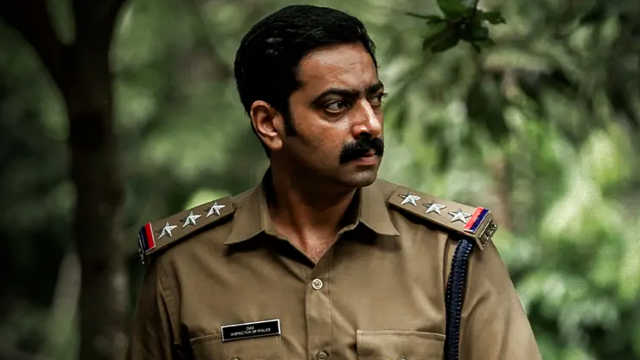
Sukhpreet Kahlon
New Delhi, 06 Aug 2021 7:30 IST
Don Palathara's anthropological film foregrounds the meaning and power of stories, exploring the art of storytelling and its centrality in our lives.

Written, directed and edited by Don Palathara, the Malayalam-language period film, 1956, Central Travancore, traces the lives of early migrants to Idukki who settled in just before the historic land reforms were implemented in Kerala.
The anthropological film imaginatively recreates the lives of early migrants to the region through the story of two brothers, Onan (Jain Andrews) and Kora (Assif Yogi). Despite the differences in their thinking and ways of being, Onan plans to make a quick buck by hunting a gaur or Indian bison. Though deemed an illegal act, he makes preparations for the hunt, putting together a motley crew. They set out barefoot in the high ranges to search for the creature. A series of incidents take place while they try to fulfil their purpose.
Through the use of oral history, memory and myths, Palathara’s film excavates largely forgotten histories of the people of the land, presenting us with lush detail about their lives, customs, inter-personal relationships, gender relations, struggles and community life.
As a filmmaker exploring the art of storytelling and its centrality in our lives, Palathara foregrounds the meaning and power of stories. There are family stories, ghost stories, religious stories, fantastical stories, and stories about everyday life within the community, and each story has a purpose in the film.
Each story also offers an insight into its narrator and makes us contemplate the blurring of boundaries between truth and fiction. There are stories that tell us about the biases within the community, the social and economic relationships between communities, the centrality of religion, folklore and superstition, and adds to the layers of details about the lives of the migrants.
Just as listening to a story conjures up images within its listeners, Palathara, remarkably, allows for the role of imagination to seep into the film as he withholds information that the audience expects to conventionally see. A fine example is the scene between the brothers and the woman in the tree-house whose husband is away. We know that the brother is being flirtatious, trying to seduce the woman, but can only imagine their reactions as the camera stays at a distance.
While storytelling is central to the monochromatic film, the images speak a thousand words. Stunningly shot by Alex Joseph and Jayesh Mohan, with acute attention to detail in the framing of the shots, the cinematography enhances the mythological quality of the film, framing the migrants against the vast and formidable landscape that stretches before them. The camera stays static for the major part of the film, with characters moving in and out of the frame. However, in other parts it does the opposite, making us aware of its movement, panning slowly towards the conversation between characters. Like a painting, we observe the scenes, observing the landscape along with the characters.
Shying away from dramatic action, the film’s slow, meditative form invites contemplation. We think about the images in front of us, becoming slowly absorbed in the landscape, its people and their world.
1956, Central Travancore was premiered at the 42nd Moscow International Film Festival (MIFF) 2020. It is available to watch on MUBI.
Related topics
MUBI IndiaYou might also like

Review Malayalam
Malayankunju review: Fahadh Faasil impresses in this survival drama
The Malayalam film features the actor as an abrasive man who aims to redeem himself after fighting a...

Review Malayalam
Paka (River Of Blood) review: Riveting saga of the cyclical nature of violence
Helmed by first-time director Nithin Lukose, this multi-layered film packs a solid punch with...

Review Malayalam
Antakshari review: A meandering suspense thriller with occasional moments of brilliance
Despite the excellent cinematography, production design and background score, the film's...
